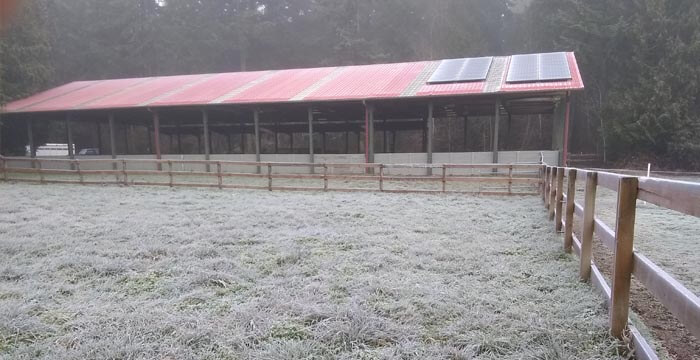Late February and early March is a transitionary time in the Pacific Northwest. The days grow longer, the temperature begins to rise, and at some point, the grass starts to grow. And when it starts growing all our chores associated with good pasture management begin. But when will it begin, and what do we do when it does? It all starts with a sum.
T-Sum 200
Grass only begins to grow when the soil temperature is right. Yes, the amount of sun is a factor, but the major overriding influence on grass growth is soil temperature. There’s a calculation that can approximate when the grass in your area will begin to grow: the classic formula T-sum 200.
T-sum 200 (T = temperature, sum = summation and 200 refers to the calculated temperature in Celsius) is a formula used to calculate soil temperature.
To calculate T-sum for your area, start on January 1, add the day’s high temperature in Celsius degrees to the day’s low temperature in Celsius degrees and divide by 2. However, if the air temperature does not rise above freezing for a day, do not give any credit for that day (result = 0). Even if the high is above freezing, if the low is below freezing no credit is given for that day.
Write down the result on your calendar and as each day goes by, add the result of that day to the previous day’s total. When your cumulative total gets to 200, your grass typically will begin to grow.
When that day comes and you can see the grass begin to grow, there are many things you can do to make for a successful first start: test your soil, apply amendments, and turn out your horses only when the grass and soil are ready.
Test Your Soil
Just like drawing your blood during a physical exam to show the things beneath the surface your doctor cannot see, a soil sample is taken and tested to show those important things we cannot see on the surface of the soil, like levels of nitrogen, potassium, phosphorus and pH. This allows you to make adjustments (add fertilizer, lime, etc.) to assist the grass during the growing cycle, as well as make long-term decisions to help the soil and grass in the years to come.
Turn out only when grass and soil are ready
As the grass begins to grow in the early season it will be tempting to turn your horses out, especially on sunny days when it seems like they can literally hear the grass growing and calling their name! But there are two very good reasons why we should not—the soil and the grass must be ready for them or things can go bad very quickly.
Check to see if the soil is ready by taking a walk. Walk in every area that your horse will be walking and see if you leave footprints in the soil. If you do, your horse will too, and even more so. In fact, their weight will not only leave footprints, but their hooves will tear up the grass by the roots and create mud faster than you can read this.
The next thing you want to be careful about is the grass. Just because it’s growing doesn’t mean it is ready for horses to graze it. It must be at least 8 to 10 inches high, depending on species, before grazing and never grazed below 3 to 4 inches in order to maintain a healthy root system.
Introduce Your Horses Slowly
Because of our rich, nutritious grasses in the Pacific Northwest, spring colic is a huge concern. To avoid it, the best practice is to introduce your horses to pasture slowly. Limit their time to 15 minutes a day the first week, then add 10 minutes a day until they are up to their normal turnout time.
By doing these few things when the grass starts growing you will not only have healthier pastures, but healthier and happier horses, too.
Michael Hipp describes himself as “just a fair-to-middlin’ cowboy from the Texas Panhandle”. Michael is a former instructor of Biological and Animal Sciences at Oklahoma Panhandle State University in Goodwell, Oklahoma. He has built and managed ranches in both Kansas and Texas and has a passion for helping folks overcome challenges in their own operations. He currently works as a farm planner for the Snohomish Conservation District in Snohomish County, Washington where he assists horse and livestock owners find solutions to resource issues and efficient chore management. Michael is an avid supporter and leader in the 4-H Horse Program. He teaches and speaks at many agricultural and equestrian focused forums and workshops annually. He lives in Snohomish County, Washington.

